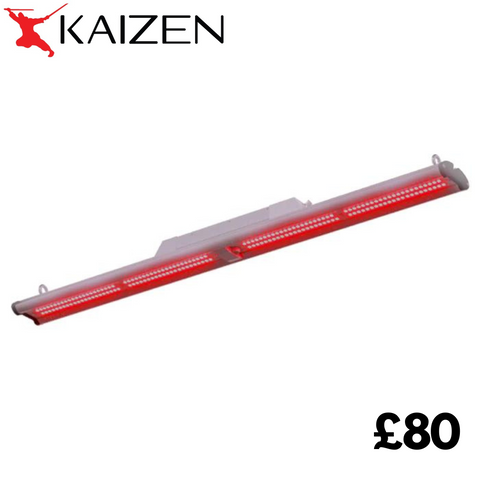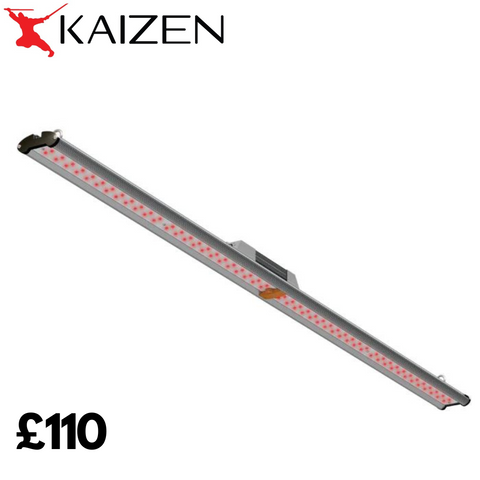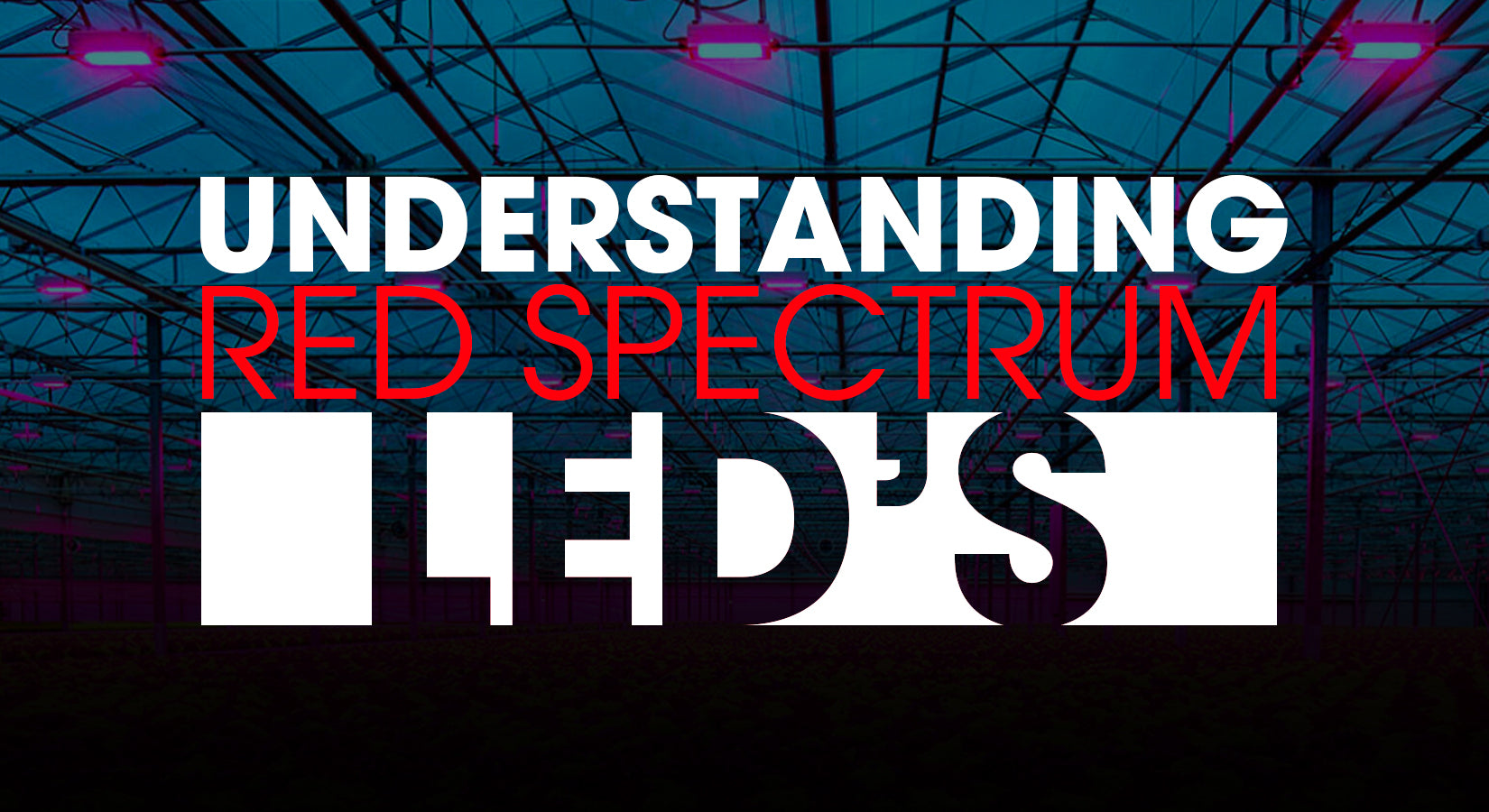What Do Red spectrum Lights Do?
Red LED’s represent the furthest colour on the colour spectrum, this is the type of lighting that typically mirrors heat. Red lighting does a lot more than provide a little bit of warmth, scientifically, when plants absorb red wavelengths, it triggers something biological in the plant, activating it into growth mode. The plant is ready to start growing to its true potential during the flowering state.
In fact, many people rely on red lights to help shorten the flowering period of their plants, allowing for better growth and better results. Instead of allowing these plants to slowly move their life cycles on their own, by manipulating lighting systems, growers can now control their plants more than ever. Red light has shown to seriously accelerate both root and flowering growth for plants, fruits and veggies, making it an ideal colour on the light spectrum for cultivation.
- Flowering Period – “Red” light range: (620-700nm; ideal: 660nm)
When plants enter the flowering period, highest yields can be achieved by exposing them to a light spectrum that contains lots of “red” wave lengths to promote flowering. The rate of photosynthesis peaks when plants are subjected to “red” wave lengths of 660nm. So choosing a supplementary lighting solution like the kaizen 100w deep red led bar with a high degree of “red” in its spectrum remains the best way for growers to imitate the shallow angle of the sun in late summer and autumn, getting the best results out of your plant.
The Benefits:
The utilisation of red lights is typically more than just to replicate the natural colours of the light spectrum. Many growers turn to using red lights because of the benefits/results they bring to a crop.
Studies have found that plants that were grown with the right amount of red light during flowering resulted in bigger, fuller plants.This is because a plant’s photosynthesis truly peaks during this much red-light exposure, helping the plant to flourish.
In general, plants that are grown under red light during their flowering period tend to produce flowers that are much bigger than those that didn’t.
Understanding Far Red Led:
Previously, experts in horticulture dismissed the notion of plants benefiting from far-red light due to its wavelength surpassing 700 nm, the typical limit for plant absorption. However, recent studies have shown that plants do respond positively to wavelengths up to 780 nm, falling within the far-red spectrum.

Deeper investigations into the effects of far-red light on plant growth have yielded significant insights. Although far-red light alone might not have a substantial impact, its combination with a full-spectrum lighting schedule holds promising potential for enhancing plant growth and boosting photosynthesis. Let's explore the key benefits of utilizing far-red light:
1. Encourages plant growth upon detecting far-red photons
Most plants trigger a unique response that mimics their behavior in shaded conditions. This leads them to grow taller or increase their leaf size in an effort to access more light, as they perceive the presence of far-red light as an indicator of shade.
2. Enhances Photosynthetic Efficiency
Recent scientific findings highlight the remarkable outcomes achieved by integrating far-red light with shorter wavelengths within the complete spectrum. Far-red photons interact with shorter wavelength photons (such as red, blue, and green) to amplify the efficiency of photosynthesis. In practical terms, this translates to the potential for accelerated and stronger plant growth.
3. Long-Term Gains
The accumulation of these new research findings suggests that supplementing standard wavelengths with additional far-red light can lead to increased crop yields and reduced production times in indoor setups.
For those involved in indoor agriculture, embracing LED horticulture lights equipped with far-red wavelengths can translate to higher profits and enhanced return-on-investment prospects.
How can Far-Red Light Benefit Your Plants?
1. Accelerate The Shift From Growth To Blooming
By providing 20 to 30 minutes of exclusive far-red light at the beginning of each dark cycle, you can effectively "reset" your plant's phytochromes that were activated by regular red light during the day. Think of far-red light as a sort of "nighttime boost" for your plants, helping them gather the necessary chemical signals for initiating flowering.
2. Enhance Flower Size
A greater proportion of far-red light in comparison to red light triggers plants to stretch and elongate. While this might not be a sought-after effect for indoor growers during the vegetative stage, it can prove valuable during flowering by allowing flowers more space along the stem to flourish and mature freely.
3. Support Terpene and Essential Oil Production
Far-red light has the potential to increase the levels of essential oils and terpenes, which are often key indicators of crop quality. This effect is particularly notable when far-red light is used alongside UV light.
4. Amplify Overall Photosynthetic Efficiency
Far-red light contributes to improving the overall efficiency of photosynthesis in plants.
Utilising Far-Red Light: Applicability in Vegetative Growth, Transition, and Flowering Stages
The deliberate utilisation of far-red light among indoor cultivators is a recent trend, with several benefits still grounded in anecdotal evidence. When used during the vegetative phase, far-red light can lead to undesirable stem elongation, resulting in tall, weak plants that are challenging to illuminate effectively. Some observations suggest that certain far-red wavelengths may enhance leaf size, potentially elevating photosynthesis levels and substantially boosting yields in leafy greens. However, for indoor growers focusing on flowering and fruiting plants, prioritizing a blue-rich light spectrum during vegetative growth is recommended to maintain compact and robust plant structure.
To counteract excessive stretching during the transition period between vegetative and generative growth, careful management of daytime and nighttime temperatures proves beneficial. Maintaining a small temperature differential (0 – 5 °C) and introducing some far-red light during this phase can expedite the transition in specific plant species, particularly those with long-day photoperiods, accelerating the flowering onset. Crucially, during this transition phase, it's essential to ensure a higher presence of red light (around 660 nm) compared to far-red light. Most LED grow light systems are designed to maintain this balance consistently. Additionally, certain growers are experimenting with exposing their plants exclusively to far-red light for 20 to 30 minutes at the start of the dark period, aiming to accelerate the shift from vegetative to generative phase.
The flowering stage stands out as a particularly exciting phase for the application of far-red light. Indoor growers have reported enhancements in terpene production, increased flower sites, and larger flower masses. Given the abundant supply of red light during this stage, integrating far-red light becomes even more promising. If you choose to incorporate far-red light, the flowering stage is the opportune time to do so.
Emerson Effect:
10-15 minutes after full spectrum lights are turned off.
It is essential not to over-expose your plants to extremely long periods of far-red light, as it can lead to stress. When plants are stressed from over-exposure to far-red light, they are conditioned to believe they are close to the end of their growing season. Therefore, they rush the flowering process, leading to poor flower quality.


